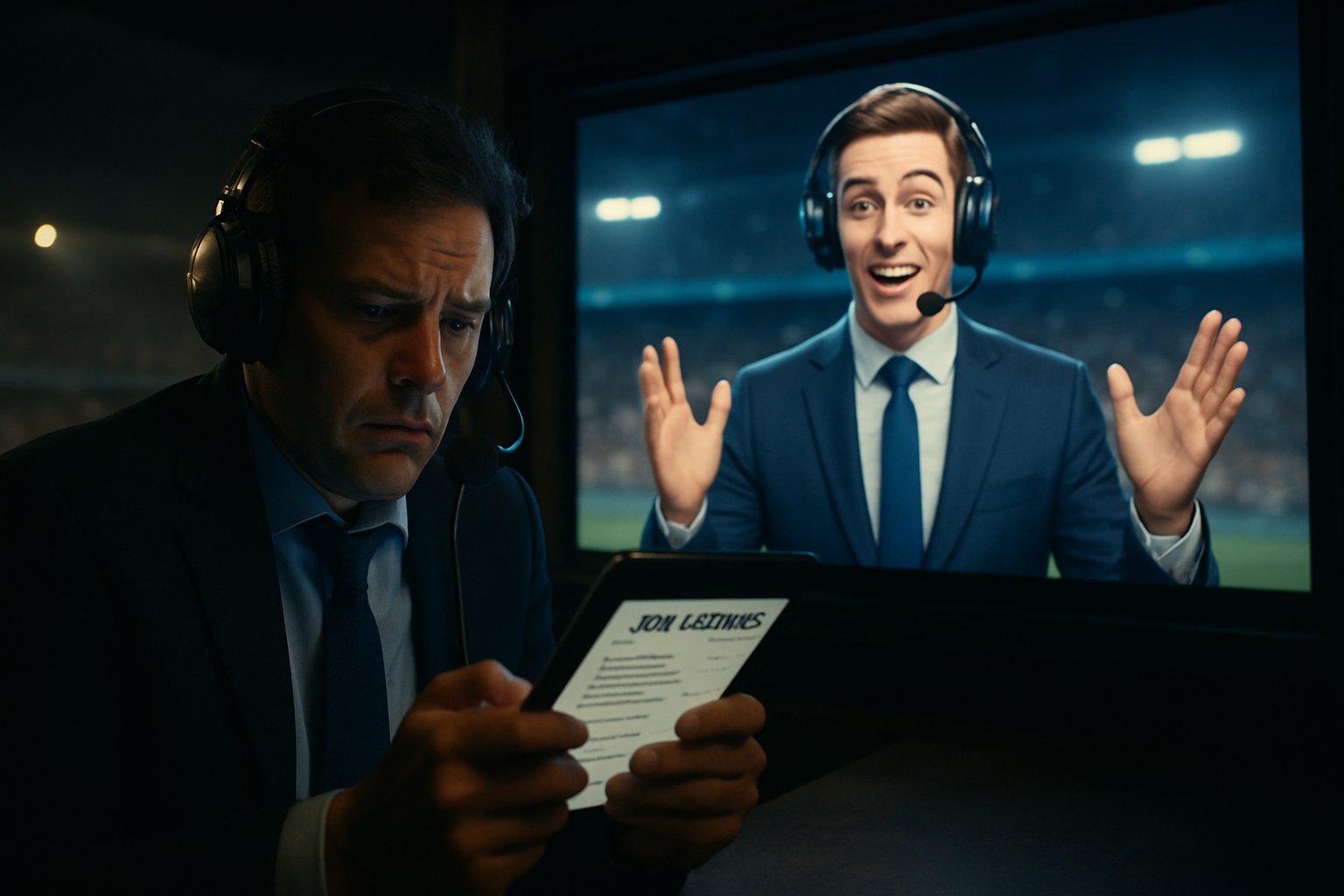
AI CERTS
9 hours ago
AI in Media: Rogan’s Concern Over Synthetic Commentators
Meanwhile, market forecasts predict billions flowing toward generative tools this decade. Job Displacement worries spread as production roles face automation pressure. Nevertheless, many creators still trust human spontaneity to maintain loyal Entertainment audiences. Additionally, lawmakers scramble to define voice rights before deepfakes scale unchecked. This article unpacks Rogan’s fear, current experiments, and strategic responses for media professionals.
Rogan Anxiety Over AI
On episode 2400, Rogan told guest Katee Sackhoff he sees algorithmic replacements looming. He stated, “there’s probably going to be AI UFC commentators to do a better job than me.” Furthermore, he referenced a synthetic conversation between himself and the late Steve Jobs that never occurred. These examples underscore how quickly Generative Voices can mimic tone, pacing, and comedic timing.

In contrast, Rogan argued that live energy still matters during chaotic fights. Consequently, his confession resonated across creator forums that frequently discuss AI in Media ethics. The admission also elevated mainstream awareness of commentary risks beyond niche tech circles.
Rogan’s words offer an authentic pulse check on creative anxiety today. However, experiments inside stadiums reveal that the disruption is already underway.
Sports Commentary Disrupted Fast
Tennis provided the clearest proof during the 2025 U.S. Open. IBM’s chatbot commentator logged five million fan interactions inside the tournament app. Moreover, three-dimensional replay visualizations allowed personalized angles alongside real play-by-play. Broadcasters viewed the pilot as a model for scalable bilingual streams. AI in Media pilots such as the U.S. Open reshape fan expectations overnight.
Meanwhile, Descript, ElevenLabs, and Play.ht market turnkey announcer clones for highlight packages. These tools create localized audio within minutes, shrinking post-production costs drastically. Entertainment executives applaud the efficiency when scheduling night-of reels for social channels. Therefore, sports leagues now weigh fan novelty against authenticity erosion.
Early pilots prove that synthetic commentary is no longer theoretical. Subsequently, media teams must evaluate benefits before competitors set new listener expectations.
Generative Tech Advances
Technical breakthroughs have shrunk data needs for convincing voice cloning. For example, Descript Overdub trains a usable model from mere minutes of audio. Additionally, transformer architectures capture prosody and emotional contour that fooled many listeners during lab tests. Generative Voices systems now output hours of continuous speech without audible glitches.
Analysts forecast the generative segment topping fifty billion dollars by 2028. Consequently, investors continue pouring capital into start-ups selling customized announcers and podcast hosts. AI in Media entrepreneurs pitch personalized recap feeds, adjusting jargon to each user’s expertise level.
Technology progress drives both excitement and regulatory alarm. Nevertheless, deeper adoption hinges on legal clarity, which we examine next.
Market And Legal Turbulence
Voice replication collides with a patchwork of state and federal proposals. California’s Digital Replica Act restricts unauthorized deepfakes, while the NO FAKES bill drafts national standards. Moreover, Tennessee’s ELVIS Act and similar laws expand performer rights beyond likeness to vocal attributes. Regulators cite billions lost to impersonation scams to justify quicker action.
Meanwhile, unions like SAG-AFTRA negotiate clauses covering synthetic voice reuse. Job Displacement remains a bargaining flashpoint during these talks. Therefore, organizations demand clear consent workflows, watermarking, and transparent provenance logs from vendors. AI in Media stakeholders monitor rulings closely because penalties could reshape licensing economics.
Legal momentum signals tougher compliance obligations ahead. Consequently, strategic planning must begin before enforcement tightens further.
Human Value Remains Vital
Despite technical wizardry, human commentators deliver unique contextual judgment during unpredictable moments. In contrast, models rely on historical patterns, risking stale reactions when fights deviate. Fans also relate to known personalities whose histories enrich broadcast narratives. Entertainment thrives on emotional connection that algorithms rarely convey consistently.
Furthermore, live humor, audible excitement, and real-time corrections build trust on air. Creators can reinforce their market relevance by embracing hybrid workflows. Professionals can boost authority through the AI+ Writer™ certification on responsible automation.
Skilled presenters who leverage tools, not fear them, will command premium roles. Therefore, balancing authenticity and efficiency remains paramount as technology accelerates.
Preparing Media Professionals
First, audit your voice archives and clarify ownership rights before signing platform deals. Next, negotiate explicit usage clauses covering training data, distribution, and revenue splits. Additionally, experiment with multilingual synthetic tracks to broaden reach without diluting your signature feed. AI in Media practitioners should document disclosure practices to preserve audience trust.
Consider these proactive steps:
- Monitor emerging detection APIs for real-time deepfake alerts.
- Collaborate with legal counsel on compliance across diverse jurisdictions.
- Invest in live-event formats that spotlight irreplaceable improvisation.
Moreover, maintain continuous education regarding model capabilities and ethical boundaries. Generative Voices are evolving weekly, so static policies quickly lag innovations.
Preparation converts uncertainty into strategic advantage. Subsequently, we explore future industry scenarios.
Future Outlook And Actions
Experts envision three plausible outcomes for commentary. Scenario one maintains human control while AI supplies multilingual side channels. Scenario two replaces regional broadcasts with fully synthetic crews to cut costs. Scenario three blends live hosts with automated analytics overlays, similar to graphic stats today.
AI in Media strategists must track audience sentiment to decide which path dominates. Job Displacement will escalate if rights holders choose the second scenario broadly. In contrast, hybrid approaches may even create new Entertainment roles around personalization. Consequently, continuing professional development becomes non-negotiable.
Industry leaders who anticipate shifts now will safeguard both careers and audience trust. Therefore, decisive action today shapes tomorrow’s competitive landscape.
Key Conclusion And Takeaways
Joe Rogan’s candid fears humanize a broader industry crossroads. Generative Voices, regulatory flux, and robust investor momentum guarantee continued upheaval. However, authentic storytelling, transparent workflows, and ongoing education safeguard creative relevance. AI in Media will reward professionals who embrace augmentation while defending consent. Meanwhile, proactive licensing helps contain Job Displacement and reputational harm. Consider formal training, including the linked AI+ Writer™ credential, to refine future-proof skills. Consequently, readers should audit workflows, engage legal advisors, and experiment responsibly today. Take the next step; explore our certification resources and stay ahead of synthetic disruption.



